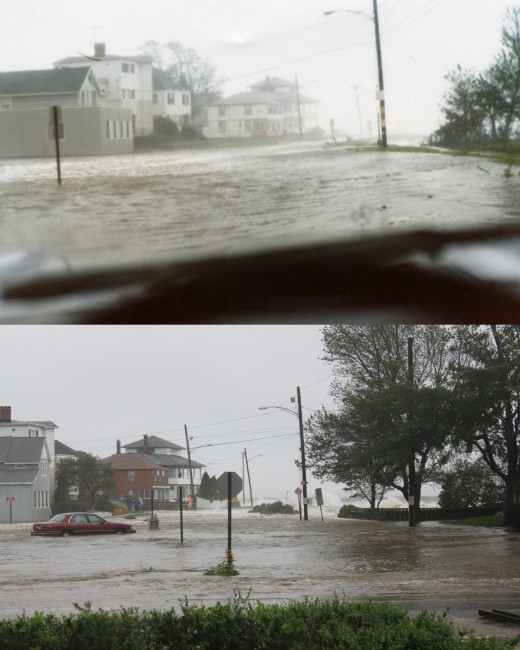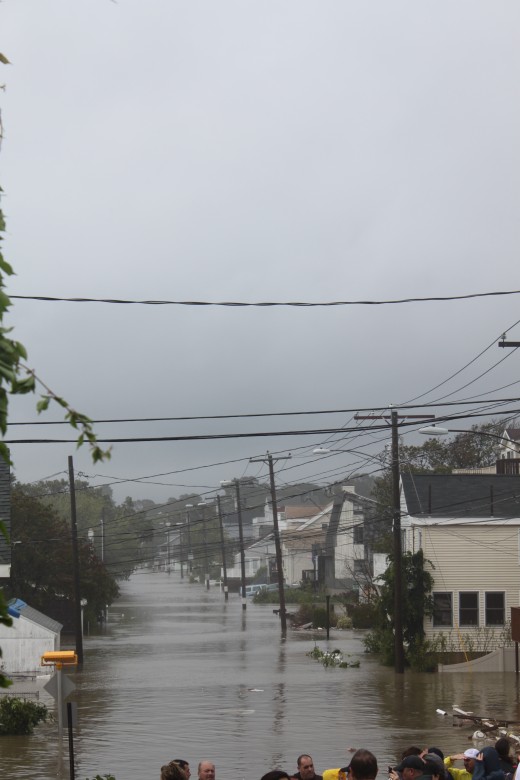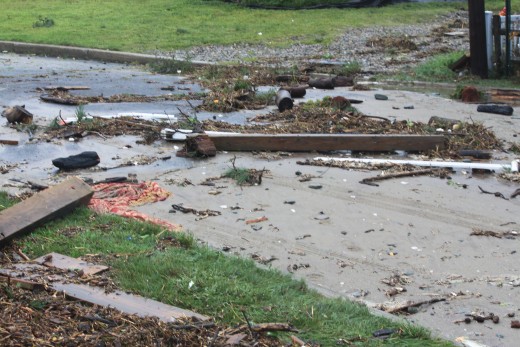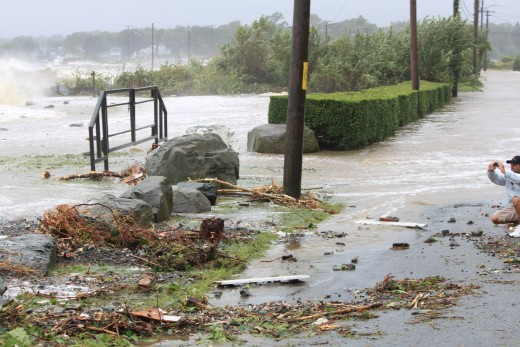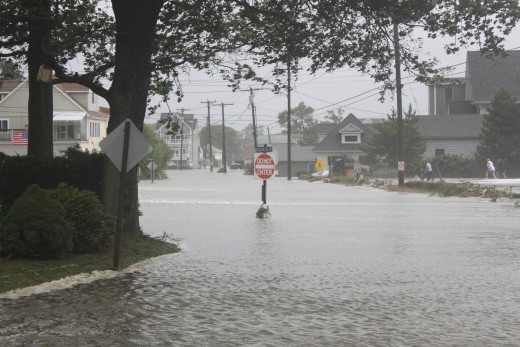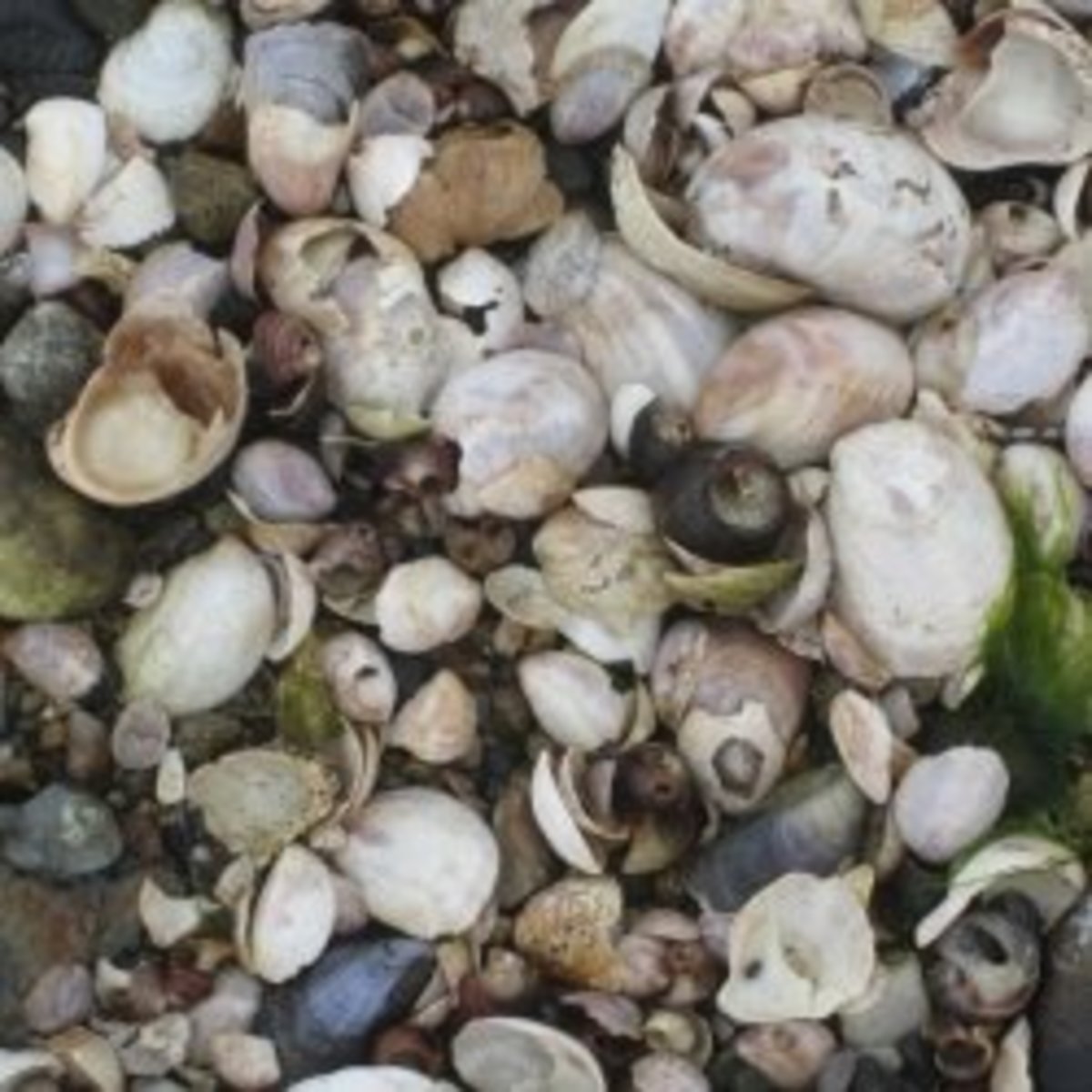Water Rising: What is the Deadly Phenomenon Storm Surge?
What is Storm Surge?
The waves rise and curl as they pound the beach, growing larger with every set. The wind abrasively moves across the sandy beaches, moving the beach grain by grain to the dark road. The wind picks up and the rain begins to fall. The storm is approaching…
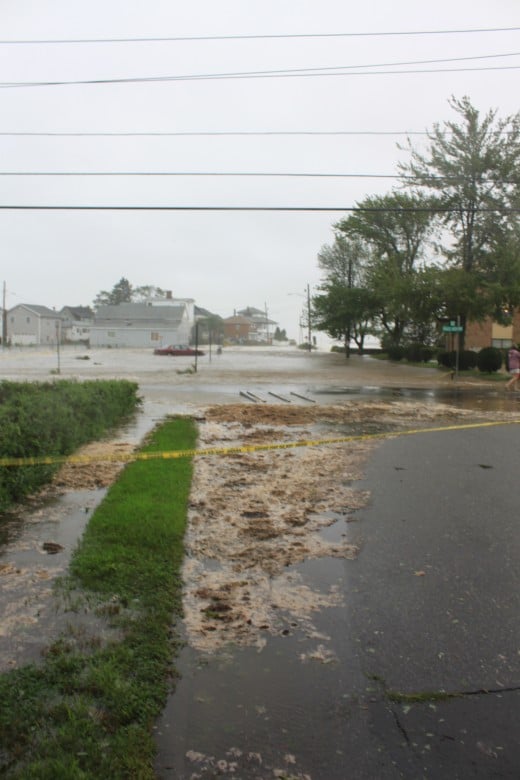
As sea level rises, land sinks and over development continues along the coast, storm surge will become a more often problem and threat to life and property.
You’ve batten down the hatches and taken shelter in your home. You are out of the windswept rain, thunder and lightning but are you safe? Like many storms along the coast, the focus is on the wind but the real danger and destruction more often than not comes from the water. The waves are powerful and destructive but it is the surge that carries them to your front door, slapping up against your foundation, every hit a mini earthquake. Storm surge accompanies a low pressure system bringing flooding, beach erosion, property damage and even fatalities. As much as storm surge has been studied, documented and forecasted it seems people are still caught off guard by the wall of water. As defined by the late Dr. Mel Goldstein in “The Complete Idiot’s Guide to Weather”, “A storm surge is a moving wall of water that races to the shore and crushes coastal areas. The eye’s low pressure causes the sea beneath it to rise measurably, usually well above the high tide level. The strong winds force additional piling up of the water” (Goldstein96).
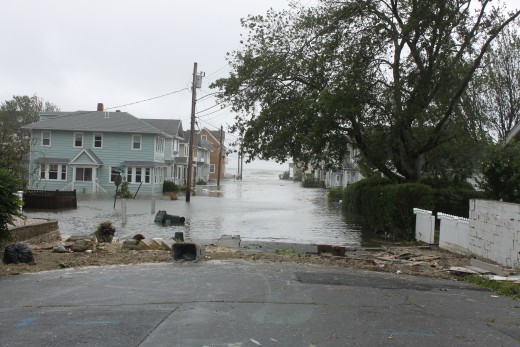
So What is Storm Surge...
It may be easier to think of storm surge as a dome of water. Low pressure in the atmosphere is associated with storms. The center of a Hurricane is an extreme example of a low pressure. As the title suggest this column of air in the atmosphere has less pressure than the air around it. This means that there is less atmosphere (air) pushing down on the ocean, which allows the water to rise slightly. The water rise is similar to a dome shape, the highest level of the water being where the lowest pressure is. On top of this dome the wind will push the water up further with waves. As the low pressure moves towards or on to land, the water is carried up like a suction cup into the coast. The coastal terrain and elevation have a large impact on how far and deep storm surge will flow onto the land. Areas with flat coastal plains tend to be impacted by storm surge more often, while also reaching farther inland. Rockier coastlines, like that of Maine, are not impacted by storm surge as much due to the steep elevation climb right at the coast.
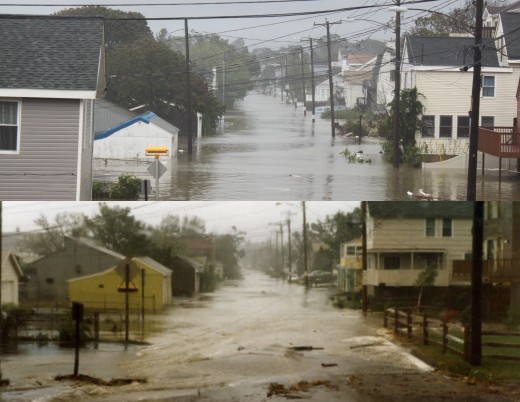
The impacts of storm surge depend on the terrain and elevation of the coast line.
How is Storm Surge Measured?
Storm surge is measured by how much the water level is above the high tide level. So if your high tide level is 6 feet and you get a 2 foot storm surge, the water level will reach 8 feet plus any waves on top of that! Storm surge can do a lot of damage because it brings the water line up and into the coast, which is unfortunately where there is a lot of human development and infrastructure. The rise in water level brings the pounding waves with it causing even more damage. In recent years storm surge have caused significant damage across the United States. There was a storm surge of at least 20 feet in Alabama and Mississippi during Hurricane Katrina in 2005. More recently in my own city in Connecticut, storm surge of only a few feet caused damage during Hurricane Irene (See Pictures above and to the right).
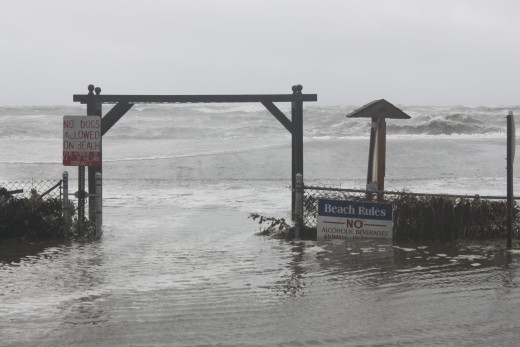
Storm surges are not just an ocean problem, large lakes are susceptible to storm surge and rivers act as channels for surge to run up, impacting inland areas as well!
What to Remember...
Storm surge is a serious aspect of any storm moving into the coast and can be caused by any low pressure system, not just hurricanes. The surge can be anything from a nuisance to wiping out whole communities, leaving nothing but foundations behind as it did in Hurricane Katrina. Storm surge will only happen more often and impact more people as sea level rises over the next century. Even urban areas like New York City are susceptible to storm surge, sometimes it can even cause more damage! If you learn anything from this hub, understand that storm surge is a raised wall of water associated with low pressure systems that inundate land threatening life and property. Also understand the only way to escape storm surge is to move to higher ground!
NHC Fast Draw: Storm Surge
Have You ever been impacted by Storm Surge?







